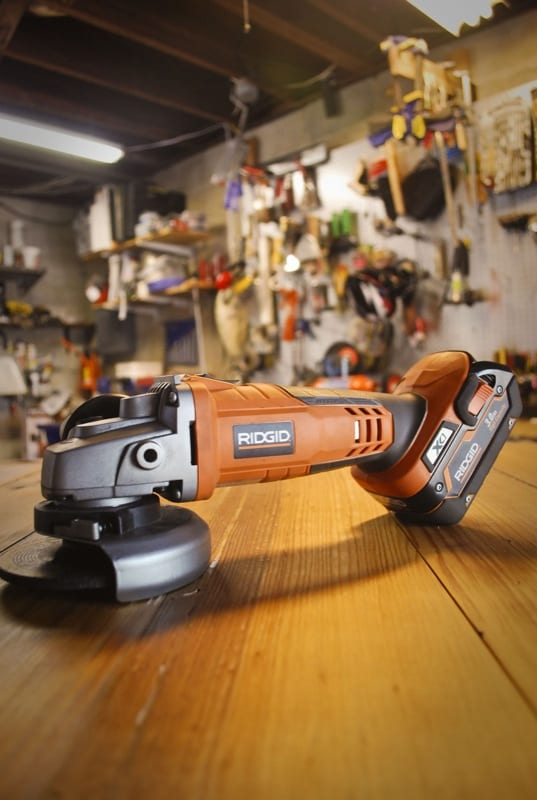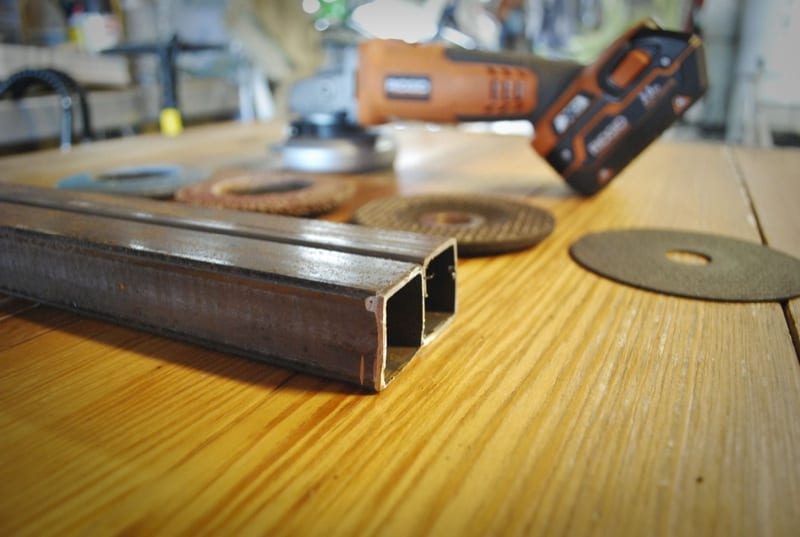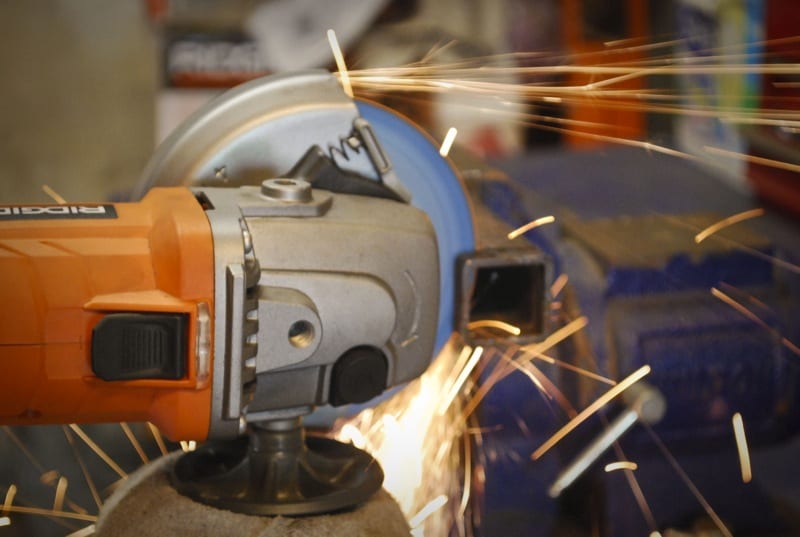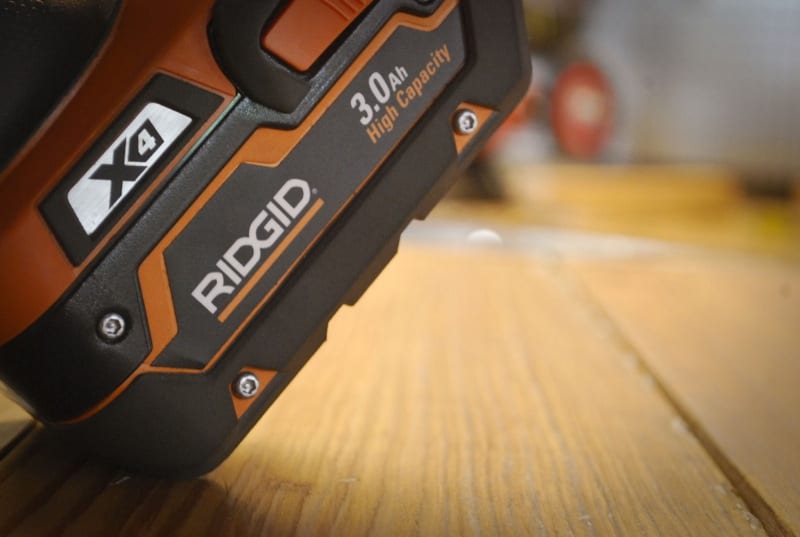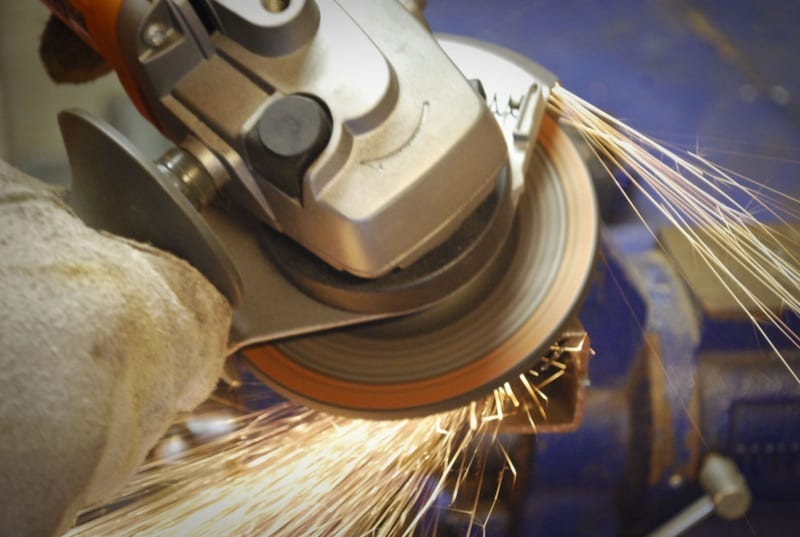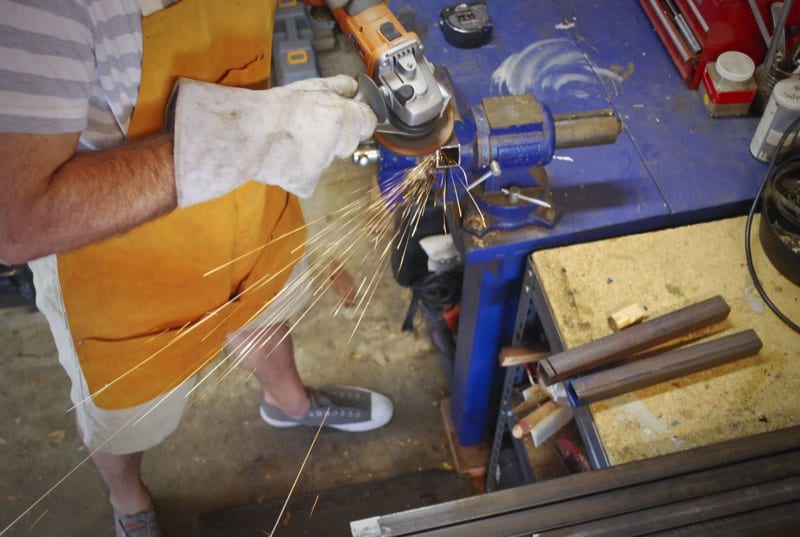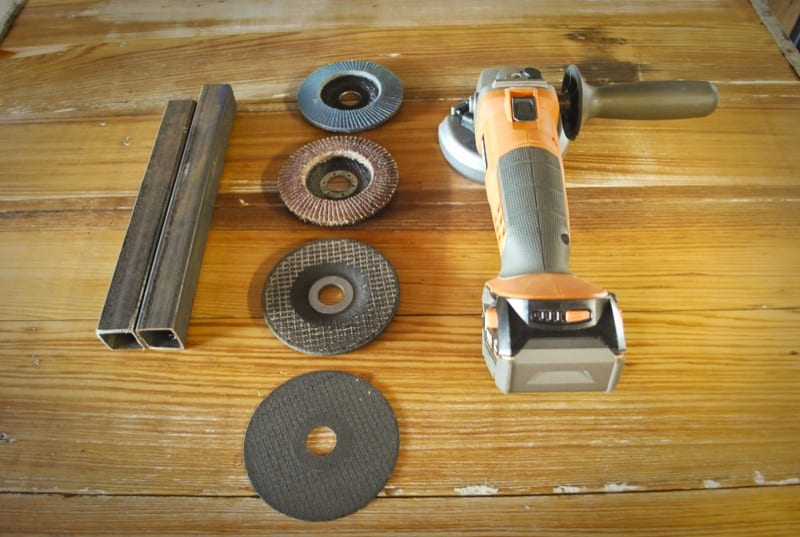Lots of people have hobbies—one of mine happens to be building vintage industrial furniture and light fixtures by mixing steel and reclaimed lumber. It’s something I’ve done for years, and in addition to having grown quite adept at crafting all sorts of designs from seemingly impossible raw material, I’ve also learned that it’s a great way to pinch pennies. Every time my wife falls in love with a new piece of amazing furniture she’s found in the latest Anthropologie/Restoration Hardware catalog, my budgetary senses kick in, and I figure out how to build it myself. It’s sort of a personal challenge that I love taking on every time. It was time to see if the Ridgid 18V angle grinder could help.
Having worked with wood and steel for years, I have more than a few tricky projects under my belt. While saving two grand on the latest table or dining set may seem like motivation enough, it’s the ability to create an amazing handcrafted piece of furniture that drives me even more.
When Pro Tool Reviews asked me if I thought the latest cordless Ridgid 18V angle grinder could stand up to the kind of use I typically require, my response was simple enough: There’s only one way to find out. In fact, I had just the project to test this baby out on. It’s a coffee table for our living room, and to be honest, it’s really been about 30% finished and sitting in my garage for close to a year now. It was high time to break out the mig welder, blow off the dust, buy some steel from our local industrial supply shop and put this tool to work. It would be good to see if the Ridgid 2.0Ah and 4.0Ah batteries could stand up to the demands I’d place on this tool.
The Project
In modeling this piece I took design cues from an old brickmakers table with a sturdy wood plank top and a square steel frame beneath. I managed to salvage some heart pine lumber from an old carriage style garage door my neighbor was throwing out after renovating his garage. The door was from the 1940’s and solid as a rock save for the few termite galleries I uncovered. I ran the lumber through a surface planer and gave it a good sand, then loosely joined the 2 x 6 planks. Next, I picked up a piece of steel square tubing, and $24 later, I had the raw material for my base and the steel that would test whether the Ridgid 18V angle grinder had the mettle to cut my metal.
Using the Ridgid 18V Angle Grinder—First Impressions
I planned to use the grinder primarily as a cutoff tool with a metal cutting wheel to create my steel frame pieces. Then, after I had the raw material sized up, I would pop the grinder wheel on to prep the pieces for my welds. Lastly, I would use a sanding flap wheel to clean up any ugly welds.
I have to admit, the first time I fired up the Ridgid cordless grinder I thought to myself, “Hmm, really? Can’t you give me a bit more in the RPM department?” The thought was that if I was going to use this tool to cut 1-1/4 inch 14 gauge square tubing, it had better ‘pump up the jam’ a bit. However, once I started cutting I was pleasantly surprised. As I clamped in my first piece, the tool began cutting away material. It didn’t back down at all but maintained strong torque and pushed through every steel atom with resolve.
I also observed that the the On/Off switch is a little tricky to manage with thick welding gloves. I found that I had to pull off a glove to engage it properly, before putting it back on and beginning my work.
Overload Protection and Battery Life
I did get a bit overzealous a few times and found out the grinder will shut down rather than damage the motor. It doesn’t do this easily, though, and the tool has a handy overload indicator LED that lets you know when you are pushing too hard rather than letting the tool do the work for you. Of course, I find all of that highly preferable to a plume of smoke!
I got through six cuts from one complete charge before the lithium-ion battery on the Ridgid 18V angle grinder gave out. I popped the battery in the charger and headed inside for lunch. (It was good timing…I was pretty hungry.) After about an hour, the extended-run battery pack was charged up again, and I set back to work cutting out the remaining frame pieces. I got through seven more cuts and ran out of juice again—blast!
I was a bit disappointed in how quickly I went from three bars of battery life to zero. The solution here is obviously a second (or third) battery in order to keep the work moving. And this is where the corded vs. cordless debate rages on. I have two small kids, and I knew if I didn’t get all the project noise-making done before nap time I’d be toast! So if you’re doing a large number of cuts then the convenience of cordless may give way to the practicality of tethered power.
Cordless Grinding
After one more charge cycle, I got all of my pieces cut out and started prepping the ends for welding. Basically, this involved grinding off an angle where the pieces will be joined and making sure there are nice, clean, raw areas of steel to weld. For this phase I used the provided wrench to remove the cut off wheel and pop on a grinder wheel. One quick note here about the wrench: it’s not stored on the tool, so it can (and likely will) easily get misplaced. Oddly enough, I also own a corded Ryobi grinder which has a little slot inside the removable handle to keep the wrench at hand when it’s needed. Ridgid should take note.
For the grinding stage I removed the tool-less guard, so I could get a bit more range of motion with the tool. The guard adjusts easily and is quickly rotated or removed with the handy lever located on its left side. It was at this stage of the project that I really started to love this tool—it’s so mobile! There are no cords to get tangled up in (or to keep away from 9000 RPMs of spinning grinder blade). The Ridgid R86040B cordless grinder earns big points here for mobility.
Wrapping Up the Project—and the Review
I was able to get all my pieces prepped, a change from using the Evolution Rage 3 sliding miter saw to cut the metal pieces to size, and was ready for welding in about 40 minutes. The battery held up really well for this type of medium-duty use. With the prep out of the way, I was ready to pull out the big leather gloves and the welding mask and have some fun. (That is, if you like this sort of thing.)
Once I finished the tricky parallel squares and got my pieces all together, it was time to pop on the 36 grit flap wheel and clean up my welds a bit. I like using the flap wheel as it’s a bit more precise and not as hungry as the grinding wheel. During this work I found it tough to really be a “surgeon” and get very precise because there is only one speed: ON. I like being able to dial back the RPMs a bit for this task, so I had to be extra careful not to take too much off. It turned out just fine, but a variable speed control would have made this tool even better. In my work I strive for a handmade look, so a little variation is fine with me. I got the table all assembled and finished it with low gloss tung oil and a coat of paste wax.
Specifications
- No load RPM: 9,000
- Battery: 18V Li-ion (not included)
- Spindle thread: 5/8″-11
- Wheel size: 4-1/2 in.
- Load-level LED
- Weight: 4.5 lbs.
- Includes: R86040 angle grinder, Side handle, Spanner wrench, Tool-less guard, Grinding wheel, Flange, Clamp nut.
- Price: $99 (tool-only); $99 (X4 Li-ion HC battery); $49 (dual chemistry charger)

